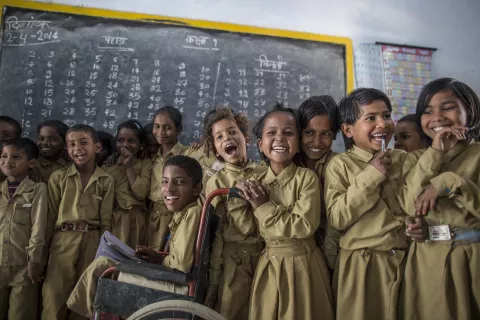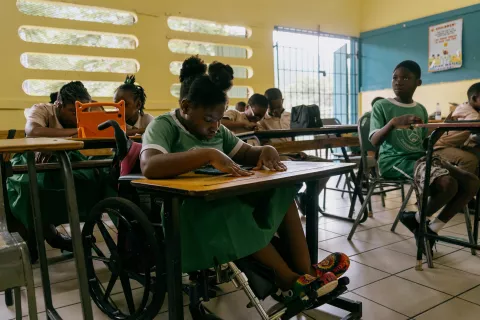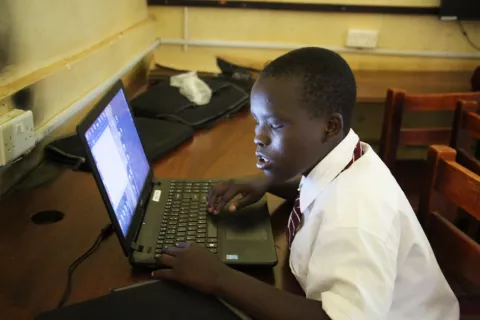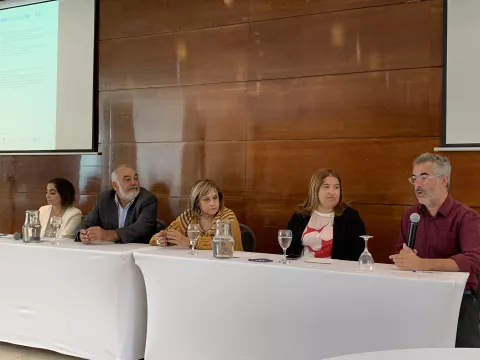Article
Glossary
Glossary of important terms
Elias Constantopedos
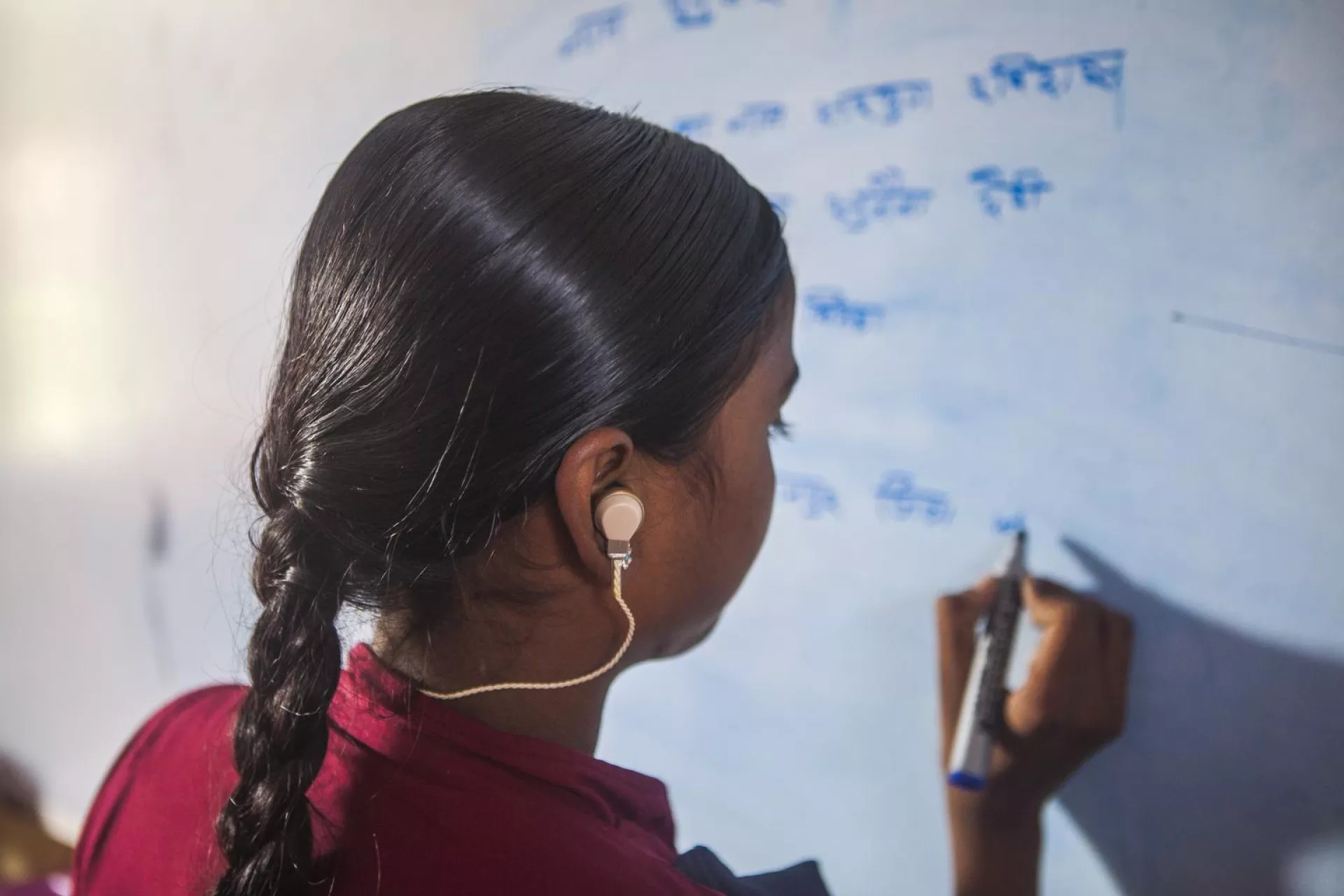
18 June 2019
| Term | Definition | Additional Info |
| Accessible / Accessibility | Persons with disabilities accessing, on an equal basis with others, the physical environment, transportation, information and communication, including information and communications technologies and systems, and other facilities and services open or provided to the public, both in urban and in rural areas (UN, 2006). | |
| Accessible ePubs | Accessible ePubs are ePubs that are structured correctly and include features for persons with and without a disability. | Some features of accessible ePubs include: Image Descriptions, Semantic tagging in HTML, Support for high contrast and text resizing, support for TTS readers, correct metadata referring to the accessible features etc. |
| Accessible Formats | Information available to people with different types of disabilities including displays of text, Braille, tactile communication, large print, accessible multimedia, written, audio, plain language, human-reader, and augmentative and alternative modes, means and formats of communication, including accessible information and communication technology (UN, 2006). | |
| Accessible Interactive Activities | Accessible activities generally written in JavaScript or a similar language that allow the user to interact with questions and answers. This content may be embedded within an ePub and separately on the web. | Some examples include: |
| Accessible Textbooks | An accessible digital textbook is a digital tool that allows for all learners, including those with disabilities, to access information in alternative accessible formats, allowing children with different learning styles to access the same content, participate in the same textbook-based activities inside and outside the classroom, and have equal opportunities to achieve positive educational outcomes than their peers. Accessible digital textbooks are an adapted version of the curriculum-based textbooks used in classrooms. They differ by being digital, accessible, and versatile, allowing users to customize and combine diverse features like narration, sign language, interactivity, audio-description of images, and other functions to suit different preferences, learning styles, or access needs. | It requires installation on an electronic devise (tablet, computer, smartphone) or, in some case, the textbook can be downloaded from a source and installed using an internet connection. Once installed, the learner can use the textbook offline on the devise. |
| Aspect Ratio | The aspect ratio describes the relationship between the width and height of a screen or content irrespective of exact pixel dimension. i.e. 4:3, 16:9, 16:10 | 4:3 aspect ratio can be a number of resolutions: 1024 x 768, 2048 x1536 both have the same aspect ratio although the second is twice as large. |
| Assistive Technology & Devices | Assistive technology describes additional software or hardware that can enhance operation of a digital device to serve the needs of users with or without a disability. | Some examples include: Refreshable Braille Display, Orbit Reader, JAWS, and Switch Control. |
| Braille | Braille is a tactile printed script that allows people who are blind or low vision to read content on a page by touch. It consists of a series of raised dots that each represent a letter and in turn represent words. | |
| DAISY | Daisy is the leading consortium for providing accessible content to users with print disabilities. | Website: www.daisy.org |
| Device Orientation | Most screen-based devices can be operated as either portrait or landscape. The user can adjust how the view the device depending on the nature of the underlying content. | This is important for applications that require landscape (generally native apps or design heavy apps) or responsive and reflowable content that can adapt to the user's preference for holding the device. |
| Disability | Long-term impairments that affect the functioning of a person and which in interaction with attitudinal and environmental barriers hinder the person’s full and effective participation in society on an equal basis with others (UN, 2006). | |
| DPOs | Disabled People Organisations. Associations of people with disabilities and/or their representatives, including self-help groups, federations, networks and associations of parents of children with disabilities. An organization is considered a OPD is a majority of its board and members are persons with disabilities (PWDA, 2016). | Some examples include: |
| eBook | An eBook is an all-encompassing term for a digital publication that represents a traditional book. | |
| ePub | EPUB is an e-book file format that uses the ".epub" file extension. The term is short for electronic publication and is sometimes styled ePub. EPUB is supported by many e-readers, and compatible software is available for most smartphones, tablets, and computers. EPUB is a technical standard published by the International Digital Publishing Forum. It became an official standard of the IDPF in September 2007, superseding the older Open eBook standard. (Source: https://www.w3.org/publishing/groups/epub3-cg/) | ePub is current |
| ePub Layout | ePub layout defines how an ePub is displayed by the reader across the page spread and is either ‘fixed layout’ or ‘reflowable layout’ | |
| Fixed Layout | Fixed Layout describes an ePub who's pages a locked to predefined dimensions and cannot adapt to varying screen sizes. | This is similar to the way a PDF operates. It is most suitable for image rich books or complex layouts where the design is required for correct comprehension. |
| IDPF | International Digital Publishing Forum is a governing body made up of publishers, technology companies, DPOs and other special interest groups in the digital publishing sector. The organization looks after the standards that facilitate the way the digital publishing industry presents | |
| Inclusion | A process that aims to ensure that the most vulnerable people are considered equally and that these people participate in and benefit from development and humanitarian programmes. | |
| Inclusive Education | An approach that ensures that barriers to participation and learning are removed and that teaching methodologies and curricula are accessible and appropriate for students with disabilities. All individuals are welcomed and supported to make progress and their individual requirements are addressed (INEE, 2010b). | |
| ISPs | Internet Service Providers. | |
| Reflowable Layout | Reflowable Layout describes an ePub layout format where the text on the pages is not locked to any width or height and can flow freely into the next page. This is similar to the way the web works, responsively for tablets and mobile devices. | |
| Open Source | Open-source software is software that is freely available for anyone to download, modify, build upon and use in development, and is governed by a license determining its use in commercial applications. Ideally, open source software is developed ‘in the open’ meaning as changes are made, they are contributed directly to a shared repository with a history of changes made by specific contributors supervised in part by moderators. | The example application is one such example of open-source software. Readium is another example of open-source software. UNICEF supports and contributes to open-source projects where possible to further the development and adoption of new technologies. |
| Persons with disabilities (children, adolescents and adults) | Persons who have long-term physical, mental, intellectual or sensory impairments, which in interaction with various barriers may hinder their full and effective participation in society on an equal basis with others (UN, 2006). | |
| PWP | Portable (Packaged) Web Publications are a packaged version of WP that has limits defined to ensure all web publications conform to the same expected structure and feature set. | |
| Readium | Readium is an ePub Reader application that is maintained by a working group consisting of experts from technology companies, publishing companies, DPOs and ePub developers/designers. The application is Open Source. | |
| TTS | Text-to-speech – describes a computer's ability to turn text in audio using a text to speech engine. | |
| Universal Design | The design of products, environments, programmes and services to be usable by all people, to the greatest extend possible, without the need for adaptation or specialized design. Does not exclude assistive devices for particular groups of persons with disabilities where needed (UN, 2006) | In our case, universal design refers to allowing users the flexibility to turn on and off features. |
| Universal Design for Learning (UDL) | Universal Design for Learning is an educational framework recognizing that all children learn differently and benefit from differentiated learning techniques in the classroom. Essentially, UDL uses practices, space, and materials that engage all of the learning strengths mentioned above. UDL seeks to accommodate individual learning differences and styles by developing and making use of flexible learning environments. Such approaches particularly accommodate children with different types of disabilities and facilitate their inclusion in the classroom. | It follows the representation, action & expression, engagement model. Representation – Present content in different ways, Action & Expression – differentiate ways the learner can express themselves, Engagement – stimulate learners w |
| Web Accessibility | Web accessibility is the field that defines how to make a website accessible to all users with and without a disability. WCAG 2.1 guidelines primarily specifies techniques to make your website accessible to people who are blind and low vision, but also includes some techniques to benefit users with intellectual, developmental or motor disabilities. | |
| WP | Web Publication is a standard published by the w3c that defines how content by publishers can be published directly on the web, viewable in a browser. |

